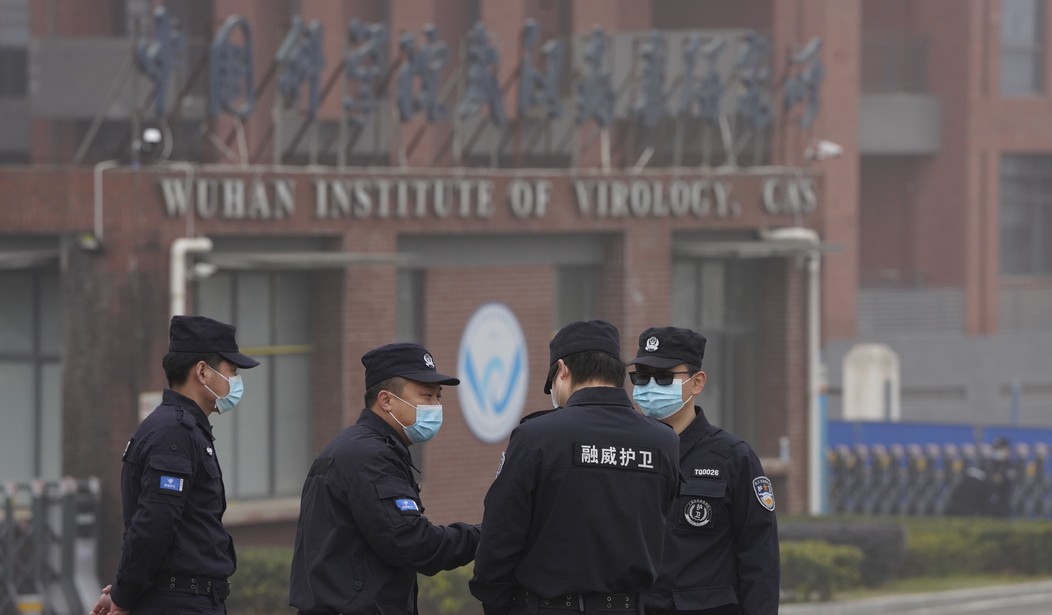Last Year, Republicans on the Senate Health, Education, Labor, and Pensions Committee released an executive summary of their investigation into the origins of COVID-19. The probe was headed up by Sen. Richard Burr, who has since left the Senate and failed to oversee the completion of the report.
But Republicans on the Committee continued working, and Axios has obtained a copy of the 302-page complete report.
What makes this report compelling is its straightforward conclusion: “The preponderance of information affirms the plausibility of a research-related incident that was likely unintentional resulting from failures of biosafety containment during vaccine-related research,” the extended report concludes.
The “research-related incident” came about because of the Chinese determination to create a vaccine to combat SARS2-CoV. China had a far more difficult time controlling the original SARS outbreak in 2002-04 than many other Western nations. Their drive to create a vaccine coupled with their grossly negligent lab security probably led to the outbreak of SARS-CoV-2, or the COVID-19 virus, according to the GOP committee report
Related: Fauci’s at It Again
There’s still no direct, incontrovertible evidence that a lab leak was responsible for the pandemic. But the Republican committee report makes a good circumstantial case.
The report describes this evidence as “circumstantial.” Both leading theories are missing key supporting evidence, which may never become available or would likely be obtained through intelligence gathering.
Burr, in a statement, said the report is “credible and worthy of inclusion in the international effort to determine how the pandemic started so that steps can be taken to prevent, or mitigate against, future pandemics.”
Indeed, circumstantial evidence can be used to support both theories.
Some scientists have argued that evidence collected from a Wuhan market that sold live animals supports the theory that the virus spilled over from animals at the site.
There is no known evidence of the virus having circulated in an intermediary host, although direct bat-to-human transmission can’t be ruled out.
But there’s also no public evidence of an originator virus being held at the Wuhan Institute of Virology, which did research on bat coronaviruses.
Experts say investigations into the pandemic’s origins have been hampered by a lack of coordination from China.
But there appears to be more convincing evidence for the lab leak, including the evidence that the virus was already in Wuhan before the first cases were discovered at the wet market. If true, that would pretty much destroy the theory that the virus was transferred from the raccoon dog in the wet market to people.
[The report] argues that scientists haven’t found any naturally occurring viruses with the same composition of the coronavirus, and that there’s evidence the virus was circulating in Wuhan before the first known cases connected to the wet market were reported.
It also argues that it appears Chinese researchers began development of at least two COVID vaccines in November 2019, including at the WIV, which “means SARS-CoV-2 would have been present at the WIV before the known outbreak of the pandemic.”
It also documents numerous instances of lab safety concerns throughout 2019, including around the time when the virus may have first appeared.
“I think there is a really reasonable logic to what the Chinese might be doing with regard to SARS coronavirus vaccines because they saw the impact SARS had on their country,” Robert Kadlec, the lead author of the report and a former HHS assistant secretary for preparedness and response during the Trump administration, told Axios.
“They had more than enough reason — as we did post 9/11 — to try to do things to protect ourselves.”
That’s no excuse for the dozens of safety violations at the Wuhan Institute of Virology — or for the NIH and Dr. Fauci’s National Institute of Allergy and Infectious Diseases’ trust in that lab’s ability to handle dangerous viruses.










Join the conversation as a VIP Member